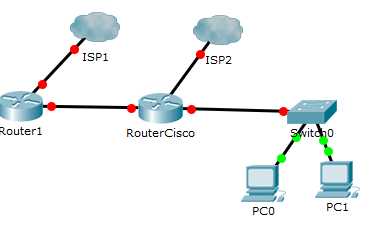Setting up a dedicated network for your smart devices is one of the smartest moves you can make to enhance your home’s security and performance. By creating a separate network, you isolate your smart gadgets from your main devices, preventing potential security breaches and reducing network congestion. This simple step ensures your smart home runs smoothly while keeping your sensitive data protected.
In short, establishing a separate network for smart devices enhances security and improves network efficiency. It involves creating a dedicated Wi-Fi segment solely for your gadgets, which minimizes risks and optimizes bandwidth. Implementing this setup is straightforward and highly beneficial for a safer, faster smart home experience.
If you’re wondering how to set up a separate network for your smart devices, it’s easier than you think. It starts with accessing your router’s settings, creating a new Wi-Fi SSID (network name), and assigning your smart devices to this new network. This way, your primary devices stay on your main network, while your smart devices operate on a secure, isolated segment. Not only does this boost your digital security, but it also helps ensure your smart home functions seamlessly without compromising your other devices.
Creating a separate network for smart devices
Setting up a dedicated network for your smart devices helps keep your main internet connection safe and organized. It also makes managing your devices easier and can improve your home network’s overall security.
Understanding the importance of a separate network
Smart devices like security cameras, smart speakers, and thermostats are always connected to the internet. They can sometimes create security risks if not properly isolated.
Creating a separate network prevents hackers from accessing your main devices and sensitive information. It also reduces network congestion, making your internet faster and more reliable for everyday use.
Benefits of creating a dedicated network for smart devices
- Enhanced security: Isolating your smart devices limits potential breaches.
- Improved network performance: It reduces traffic load on your main network.
- Better device management: Easier to monitor, control, and update smart gadgets.
- Increased privacy: Keeps personal data more secure away from less secure devices.
Steps to create a separate network for smart devices
1. Choosing the right router
Select a router that supports multiple networks, also known as “guest networks” or “VLANs.” Modern routers often come with this feature built-in, making it easier to set up separate networks.
2. Accessing your router settings
Log in to your router’s admin panel through a web browser. Usually, you enter the router’s IP address, such as 192.168.1.1, and input your username and password.
3. Creating a guest network or VLAN
Navigate to wireless settings and look for options like “Guest Network” or “VLAN.” Enable this feature and assign a name (SSID) for your smart device network.
4. Securing your new network
Use a strong password and enable encryption standards like WPA3 or WPA2. This helps prevent unauthorized access to your dedicated smart device network.
5. Connecting your smart devices to the new network
On each device, select the new Wi-Fi network and enter the password. Confirm that these devices work properly on the separate network.
Additional considerations for a secure setup
- Regular updates: Keep your router firmware and device software up-to-date to patch security vulnerabilities.
- Disable UPnP: Turn off Universal Plug and Play to prevent devices from opening unnecessary ports.
- Limit access: Use network segmentation to restrict access between different device groups.
- Monitor network activity: Regularly review connected devices to identify suspicious activity.
Advanced techniques for creating multiple networks
Using VLANs for granular separation
Virtual LANs (VLANs) allow you to create multiple isolated segments within your network. This is especially useful for tech-savvy users wanting maximum security and control.
Implementing separate routers or access points
If your home setup involves multiple routers, you can assign different routers for your primary and smart device networks. This physically separates network traffic.
Potential challenges and how to address them
Some routers may have limited support for creating multiple networks. Check your hardware specifications before purchasing or consider upgrading.
Ensuring compatibility between devices and network configurations can sometimes be tricky. Test your setup thoroughly and consult device manuals or support if issues arise.
Related topics for expanding your network security
- Using firewalls: Installing firewall software or hardware adds an extra layer of protection.
- Implementing VPNs: Virtual private networks encrypt internet traffic, safeguarding your data even further.
- Creating parental controls: Manage device access and monitor activity for family safety.
Summary
Creating a separate network for your smart devices is a smart move that offers increased security, better performance, and simplified management. By choosing the right router, setting up guest network features, and applying additional security measures, you can safeguard your digital ecosystem effectively.
Always stay informed about your network hardware capabilities and keep your firmware updated. Implementing these practices ensures your smart home remains safe, private, and easy to control.
Set Up a Separate Network for Smart Home Security
Frequently Asked Questions
What are the benefits of setting up a dedicated network for smart devices?
Creating a separate network for your smart devices helps enhance security by isolating them from your main network, reducing the risk of potential breaches. It also minimizes network congestion, leading to better performance for your primary devices. Additionally, managing updates and troubleshooting becomes easier when smart devices are on a separate network.
How can I set up a separate Wi-Fi network specifically for my smart gadgets?
Begin by accessing your router’s admin interface and creating a new network, often called a guest or secondary network. Assign a unique SSID and strong password to this network. Connect your smart devices to this new network instead of your main one. This setup isolates your smart gadgets from your primary devices, enhancing security and managing bandwidth more effectively.
What precautions should I take when creating a separate network for smart devices?
Make sure to choose a strong, unique password for the new network to prevent unauthorized access. Keep your router’s firmware updated to patch security vulnerabilities. Regularly review connected devices on the separate network, and disable remote management features unless necessary. These steps help protect your smart devices and overall network integrity.
Can I use a different Wi-Fi band to separate smart devices from other devices?
Yes, utilizing different Wi-Fi bands, such as 2.4 GHz for smart devices and 5 GHz for your main devices, can help separate traffic. Many routers support multiple SSIDs on different bands. Assign your smart gadgets to the 2.4 GHz network to isolate them while maintaining high-speed connectivity for other devices on the 5 GHz band.
Final Thoughts
Creating a separate network for smart devices enhances overall security and minimizes potential risks. Isolating gadgets prevents cyber threats from spreading to your main network. It also helps manage device traffic more efficiently.
Designating a dedicated network simplifies troubleshooting and keeps your main internet connection stable. This setup offers better control over access and activity monitoring.
In conclusion, creating a separate network for smart devices proves essential for a safer, more organized home or office environment. It safeguards your data and ensures smooth device operation, making your digital space more secure and manageable.
I’m passionate about hardware, especially laptops, monitors, and home office gear. I share reviews and practical advice to help readers choose the right devices and get the best performance.





